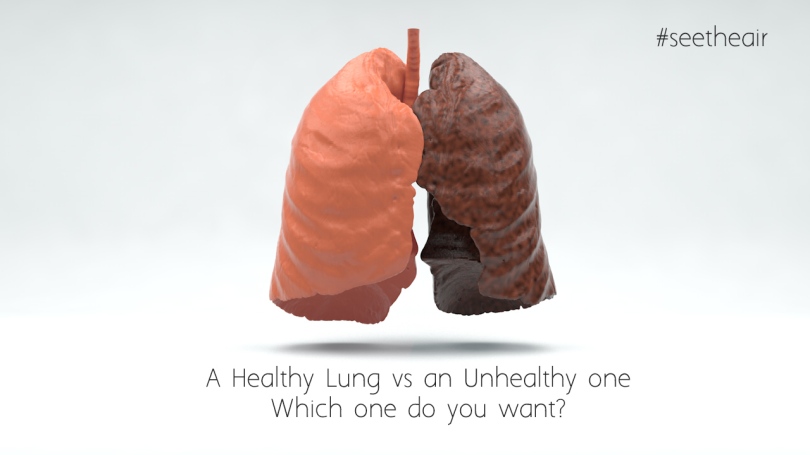Hey Urban Nomads! Welcome to another issue of the Nomad chronicle. In this week’s article, I will be talking about the environmental impacts of airplane emissions. I personally take the airplane when I travel overseas but have rarely reflected on how these emissions can actually be harmful to our environment. With the proliferation of air travel since the 1900s, air transport has made a decisive contribution to our mobility (Daley, 2010). Airplanes are able to traverse long distances quickly and safely, hence are therefore indispensable in private and business sector. With aviation forming the backbone of the tourism industry, they have thus been a major culprit in creation of environmental pollution (Daley,2010)

toxic smog in airports
According to a new study that was recently published, it states how we are more likely to die from exposure to toxic pollutants in plane exhaust than in a plane crash. As shocking as it sounds, this is unfortunately true. In fact when in comparison, airplane crashes have killed about a thousand people annually, while plane emissions contributes to the death of ten thousand people each year (Ashley, 2014). This ties into the issue on the limelight of aviation crashes being very deadly because they portray death and destruction clearly whereas environment pollution is “invisible” and a creeping problem.

Negative effects of Nitric oxide on the lungs
Earlier studies had only taken into account the emissions from planes while taking off and landing. When a plane takes off, it generally has the highest fuel consumption, leading to large amounts of emissions (Daley,2010). While that said is true, it is often during mid flight where the emissions has largest impact on the environment. Case study leader Steven Barrett, an aeronautical engineer at the Massachusetts Institute of Technology in Cambridge mentions how “unregulated emissions from [planes flying] above 3,000 feet [914 meters] were responsible for most of the deaths”. ”
Many of these particles responsible for pollution are very tiny, spanning a width smaller a human hair. These particulates are responsible for the adverse health conditions as particulates can become wedged deep inside our lungs and therefore enter our bloodstream. Furthermore, air travel also releases a large amount of Co2 into the environment. Large amount of Carbon dioxide has resulted in an enhanced greenhouse effect, contributing to global warming.
Jets streams help carry carry pollutants which are discharged by airplanes at high altitudes
This is because the airplane exhaust contains a variety of air pollutants, including sulphur dioxide and nitrogen oxides. Exposure to nitrogen oxide is associated with creating ground-level ozone, which can accelerate cancer diseases and impair lung function in humans (Daley,2010). In fact, air quality issues caused by pollutants from plane emissions attribute to 16,000 premature deaths every year.
The formation of acid rain from sulfur oxides
Sulfur dioxide are released by airplanes during the mid-flight in large amounts, directly into the environment. This can also result in the formation of acid rain as it reacts with the water vapor at the high altitude. Hence, this can lead to the formation of acid rain which can cause damage to crop and humans if there is a prolong exposure (Daley,2010). In fact, these issues are extremely hard to tackle given the trans-boundary nature of the problem.
Surprisingly, it is often not the airports which is the world’s busiest that have a higher amount of death attributed by environmental pollution. When a plane flies at cruising altitude above the clouds, the wind currents can carry the pollution far away so that prevailing winds result in the pollution to sometimes be 6,000 miles (10,000 kilometres) to the east of the plane’s route.
Conclusion
The boom in the tourism industry has created an insatiable demand for air travel. This can even be witness during the Covid -19 crisis, whereby people have requested to have mock flights and dine in in airplane cabins without the plane moving. With air travel becoming part and parcel in the tourism industry, it has become increasingly hard to distance ourselves form the mode of such transports. So take note that in the future, the next airplane you take for your holiday, you might indirectly be responsible for the impacts on our environment and human health
Video
The video hows how intertwined air travel is to our daily life
References
- Control of air pollution from airplanes and airplane engines: GHG emission standards and test procedures. (2020). ( No. 85). Washington: Federal Information & News Dispatch, LLC.
- Heavy airplane traffic potentially a major contributor to pollution in los angeles. (2014). Space Daily,
- Daley, B. (2010). Air transport and the environment. Farnham, Surrey, England;Burlington, VT;: Ashgate Pub. Co.

Harry Watts March 28, 2023
I agree with your comments on the dangers of inhalation of aircraft emissions, so many articles that I read on this subject matter highlight the cancer causing particulates emitted by Aircraft.
In addition we have PFAS pollution on Airfields currently blamed on Firefighting and Fire-Pit burning which apparently has polluted the very drinking water, and currently in the USA 600,000 Military families are infected with cancers and heart disease!
So measures must be taken to irradicate these threats to human health urgently!